Notes
Your Turn: Things Looking Up In San Antonio
1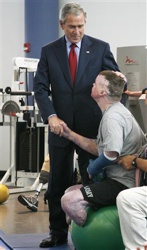
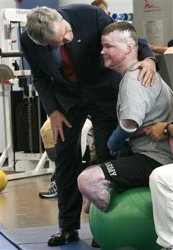 2
2
3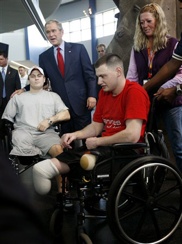
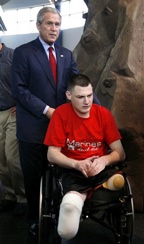 4
4
5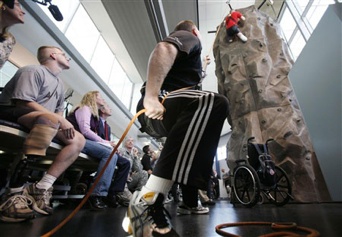
6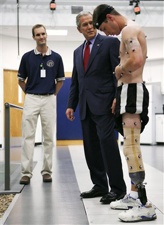
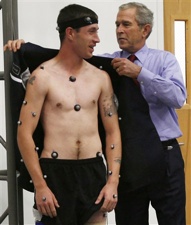 7
7
8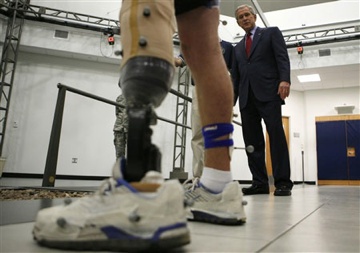
9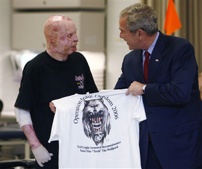
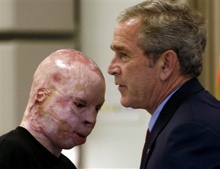 10
10
11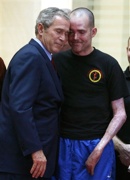 12
12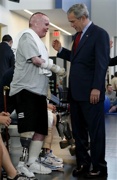 13
13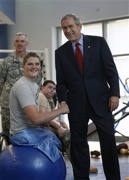
(click for larger sizes)
I offer these images to the readership for interpretation. I have numbered them to make it easier to address particular shots. Besides the broader implications, I’m wondering what specific data (or absence thereof) you pull out of these images. If you have been mostly lurking at The BAG, by the way, I strongly encourage you to share your perceptions.
In order to frame the “one sided” nature of these photos, I offer you the comments of Bill Putnam. Bill is a professional photographer who, until a few months ago, was serving in Iraq as a military public affairs officer. Over the coming months, he will be lending his experience and expertise to BAGnewsNotes, especially related to war and its packaging. He writes:
It’s hard for me, as someone who spent 21 months in Iraq, to see these pictures. The human body just wasn’t made for these sorts of injuries.
I look at the photos of Marine Lance Cpl. Isaac Gallegos (#9, 10) and wonder not about the “what,” but the “how” and “when.” Where was his unit when it happened? Were they on patrol? Did he hit an IED? Was he driving or was he a passenger?
There’s a photo of Bush with Army Sgt. Kevin Downs, who’s on top of an exercise ball (#13). He’s probably there to learn balance, an important thing for amputees. The angle is bad but it looks as if Young is a double amputee. He has obvious scaring on his head. Maybe he took shrapnel? Maybe he was burned?
I’ve been to Walter Reed a few of times since 2003; a couple in uniform and once as a civilian. From that experience, I know the questions I have for Gallegos and Downs about their situation pre- and post-injury are pretty much unanswerable. Talking to them is hard because of the military’s strict adherence to health privacy laws. Interview and photo requests take forever to grant or decline.
From the patients’ perspective they think the media – and by extension the country – doesn’t care about them. But that’s because the administration has made media access to wounded troops nearly impossible.
And then, I offer some background on George Bush’s visit to Brooke Army Medical Center from the LA Times:
The president visited the military center between parties for the Texas GOP and for Sen. John Cornyn’s reelection campaign that were expected to raise $1.3 million. When the president splits his travel time between official events — in this case, the tour of the rehabilitation center — and political events, the government picks up a share of the costs that would otherwise be charged to the beneficiaries of the fundraising.
The hospital tour gave the White House an opportunity to promote its efforts to act on recommendations of the commission led by former Sen. Bob Dole and former Health and Human Services Secretary Donna Shalala that investigated failures in the treatment of troops wounded in Iraq and Afghanistan.
[T]he president said… a new national center for work on post-traumatic stress disorder and traumatic brain injury is hiring its first staff members.
And finally, some local reporting from mysanantonio.com: (The Bush’s quotes were captured by cellphone from the Cornyn fundraiser.)
“Some day people are going to look back at this time and day and say, ‘Thank God there was a generation that did not lose faith … because the Middle East is a place free of suiciders.'”
“You can’t make profound decisions for America unless you are certain in your soul,” said Bush, who made his fourth trip to San Antonio since 2001. “The decisions I have made will make it easier for your grandchildren to live in peace.”
“The center is a tribute to the generosity of the American people,” Bush said of the rehabilitation facility, which opened in January. “The center is a testament to the country’s deep belief that someone who is injured in battle deserves all the help they can get.” The $65 million rehabilitation facility was funded by private donations from more than 600,000 people, Brooke Army Medical Center spokesman Dewey Mitchell said.
Describing the war as a battle between “light and dark,” Bush said, “If you kill people to achieve a political objective or to advance an ideology … you are nothing but evil. The only way they can convince people to kill the innocent is if they find hopelessness and despair.”
Bush watched Marine Lance Cpl. Matthew Bradford, 20, of Winchester, Ky., climb a two-story wall as part of a rehab exercise.
Bradford, who lost both legs and one eye and was blinded in the other as the result of roadside bomb explosion in Iraq, pulled himself up the climbing wall with only his arms, guided from below by fellow soldiers who cheered and yelled out directions to him.
Bush leaned over to Bradford’s mother, Debbie Bradford, and said: “He’s a good man, isn’t he?”
Original Reuters slide show. BAG roundup on previous Bush hospital visits here.
(image 1 – 12: Jim Young/Reuters. Center for the Intrepid at Brooke Army Medical Center in San Antonio Thursday, Nov. 8, 2007. image 13: Getty Images via Daily Mail)
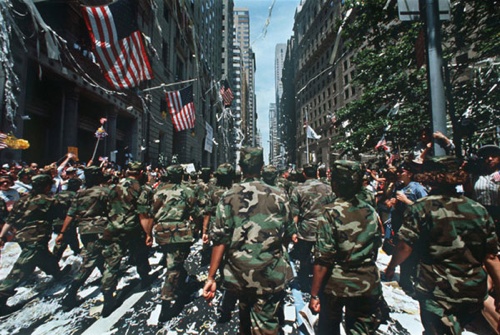
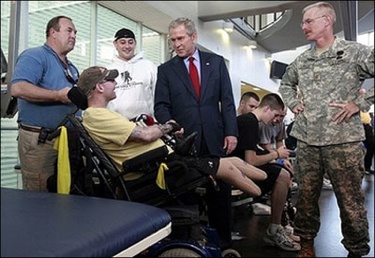
Reactions
Comments Powered by Disqus